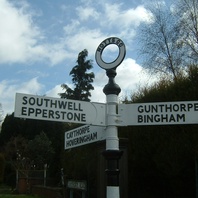
Blog Post
The East Midlands in the Viking Age
Vikings in the East Midlands is a brand-new virtual museum highlighting a number of aspects of the Viking heritage of the East Midlands. It is part of a larger project funded by the Arts and Humanities Research Council and the British Identities Research Priority Area of the University of Nottingham. The larger project (Bringing Vikings Back to the East Midlands) included two exhibitions and a variety of other activities. In our museum you will find a record of some of those activities, such as the talks given by leading Viking experts. The main aim of this virtual museum is to present some of the most important evidence for the Viking Age in the East Midlands, focusing in particular on artefacts and names. As well as original artefacts, we also present modern reproductions of those artefacts to give an idea of what they would have looked like when new. You will also find designs based on those artefacts which can be used for creative, educational and entrepreneurial purposes under a Creative Commons license. We also highlight the place-names of the region, which are some of the most important evidence for the Viking impact, and the Scandinavian personal names introduced by the Viking settlers. Finally, we introduce the Viking Age uses of the runic alphabet. Although we go live on the 1st August 2018, this virtual museum is by no means complete, but there should be more than enough here for you to browse and find items of interest. We will continue adding material throughout the coming year. If you would like to contact us, the best way is through our Twitter account @emidsvikings.
Read More
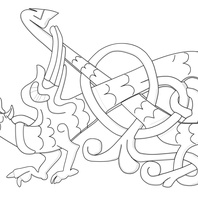
Collection
Viking Talks
A series of talks given at the University of Nottingham in 2017-2018 and made available here to watch and listen to again. All the talks are shown in the slider bar below. Many thanks to Lakeside Arts for help with organising the talks, and for recording and transcribing them.
Read More
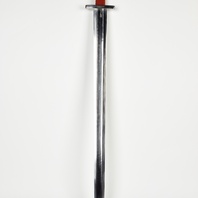
Viking Objects
Reproduction Viking Age Sword
A reproduction of the sword found in Grave 511 at Repton. The hilt is made of wood laths wrapped in tabby weave textile strips. The scabbard is made of two wooden laths, lined with trimmed sheep fleece, and covered in an oak-stained, stitched, calf-leather cover. The strap slide is copper alloy and inserted under the leather. The sword belt shown with the scabbard is based on the sword belt from Grave 511 at Repton.
Read More
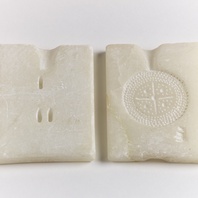
Viking Objects
Reproduction Soapstone Mould
A soapstone (steatite) mould for casting jewellery. This reproduction is double-sided so that it can be used to cast the main brooch or two disc brooches simply by reversing the mould. It is based on known examples of soapstone moulds but the main mould has been created to reproduce the Barker Gate brooch from Nottingham. Soapstone or steatite was widely used in Scandinavia and the Viking diaspora, as it is soft and easily carved, in particular for cooking vessels in cultures that did not produce ceramics. There are soapstone quarries in Norway, Shetland and Greenland. Soapstone objects found elsewhere generally suggest a Viking link to one of these places, though smaller ones are often repurposed from what were originally larger vessels.
Read More
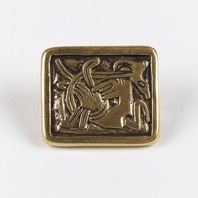
Viking Objects
Reproduction Square Mammen Brooch
This reproduction brooch is based on a small number of Mammen-style brooches found in England. Three rectangular brooches of this type are known from Linwood, Lincolnshire, West Stow Heath, Suffolk, and Bergh Apton, Norfolk, with further examples found in Cambridgeshire and East Anglia in 2015 and 2016. It is a type which has Carolingian-inspired shapes and Scandinavian decoration, which seem to have been produced in the Danelaw, and was an accessory for women who wore Scandinavian dress. Scandinavian brooches came in a variety of sizes and shapes which included disc, trefoil, lozenge, equal-armed, and oval shapes. The different brooch types served a variety of functions in Scandinavian female dress with oval brooches typically being used as shoulder clasps for apron-type dresses and the rest being used to secure an outer garment to an inner shift. Anglo-Saxon brooches do not match this diversity of form with large disc brooches being typical of ninth century dress styles with smaller ones becoming more popular in the later ninth and tenth centuries. However, since disc brooches were used by both Anglo-Saxon and Scandinavian women they are distinguished by their morphology. Scandinavian brooches were typically domed with a hollow back while Anglo-Saxon brooches were usually flat. Moreover, Anglo-Saxon brooches were worn singly without accompanying accessories.
Read More
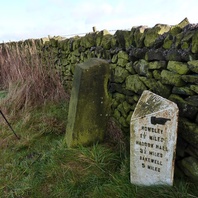
Viking Names
Great Rowsley
Great Rowsley, in the High Peak Hundred of Derbyshire, comes from either the Old Norse male personal name Hrólfr or the Old English male personal name Hroðwulf. The second element is Old English leah ‘A forest, wood, glade, clearing; (later) a pasture, meadow’, so if the first element is the Old Norse personal name then it is a hybrid place-name. The affix ‘great’ was a later addition to distinguish this Rowsley from Little Rowsley in the Darley Parish of the High Peak Hundred.
Read More
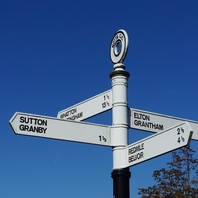
Viking Names
Granby
Granby, in the Bingham Wapentake of Nottinghamshire, comes from the Old Norse male personal name Gráni and the Old Norse element by ‘farmstead, village’. It is of interest that a document from c. 1200 records that there was a Granehou nearby and it is possible that this was the burial-mound (Old Norse haugr) of the same Gráni who gave his name to the village. Unfortunately, no such mound can be identified today.
Read More
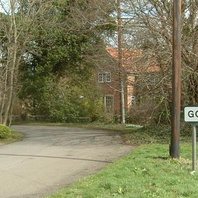
Viking Names
Gonalston
Gonalston, in the Thurgarton Wapentake of Nottinghamshire, comes from the Old Norse male personal name Gunnolfr and the Old English tun ‘farm, settlement’. It is thus a hybrid name, like Toton.
Read More

Viking Names
Maplebeck
Maplebeck, in the Thurgarton Wapentake of Nottinghamshire, is an Anglo-Scandinavian compound formed from Old English mapel ‘a maple tree’ and Old Norse bekkr ‘a stream, a beck’
Read More

Viking Names
Bigby
Bigby, in the Yarborough Wapentake of Lincolnshire, probably comes form the Old Norse male personal name Bekki and the Old Norse element by ‘farm, settlement’.
Read More
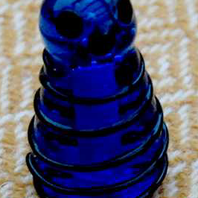
Viking Objects
Reproduction Glass Kingpiece
This glass kingpiece is a reproduction based on a set found in grave 750 at the Viking Age settlement of Birka, Sweden. This piece would have been used to play hnefatafl, a board game which is known to have been played in Scandinavia in the Viking Age.
